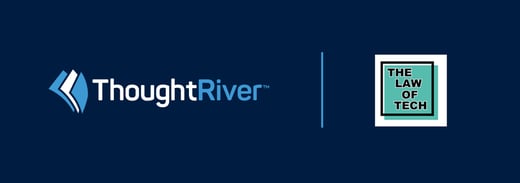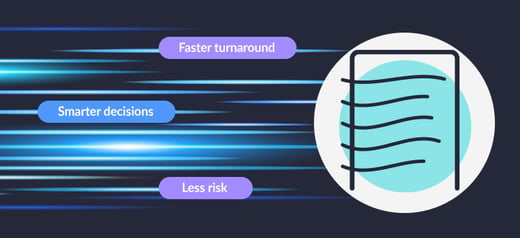There are many reasons why a corporate legal department might decide to embark on a digital transformation journey, and a number of different ways to navigate that journey once embarked upon. This article aims to explore a sensible approach to define that journey into manageable and achievable steps. It is extremely important to approach transformation projects with a powerful and far-reaching vision, but also with an iterative process to start small, show results, create momentum, and then expand the scope of the project to ensure success.
Establishing a series of small stepping stones that gradually but surely bridge the gap between your current reality and the future vision is an approach geared toward ensuring success, without any one of step needing the scale of resources that can become ‘too hard’ to justify or approve. Far too many fantastic sounding transformation projects have been terminated early in the process due to a “boiling the ocean” type approach: initially excited stakeholders being overwhelmed by the reality of what they are embarking on and the project just fizzles out before it gets going.
The Future Vision and current reality:
Before defining the potential stepping stones on the journey, it is worth exploring the future vision of the GC and comparing that with the current reality to understand the delta we are looking at. Bridging this delta becomes the subject of any legal transformation project.
The future vision of the general counsel (GC) often involves escaping the monotony of low-value contract management work and increasing strategic value of the legal department to the business, helping it to grow rapidly but in a controlled and risk-managed manner. No longer seen as just a supplier of legal services, or as a risk mitigator, the legal function and the GC themselves will be considered a strategic and valuable business advisor, a significant driver of top line growth, and quite rightfully have a permanent seat at the executive table.
Unfortunately, there is still a large rift between this future vision and the lack of analytical data and embedded technology at the disposal of the GC to enable such a vision to become reality. Also, the static budgets within corporate legal departments coupled with the increased workload, mean that the GC and the legal team are, by necessity, pulled into the lower value contract review work that keeps the wheels of the business turning. Too often, GCs find themselves bogged down by laborious contract-based processes. With limited access to legal technology, or perhaps too busy to properly implement what they have, their work has become reactive – requiring them to have their teams manually read through contracts, before reporting back to the business on the obligations detailed within them using tools like Microsoft Excel. It is unfortunately the same work, done in the same way, that GC’s and their teams have been doing for decades.
When surveying the in-house community, we found that 69% of GCs did not have good visibility of the commercial obligations contained within their live contracts, and 68% of them struggled to easily extract and analyse data to figure this out. This might seem surprising on the surface, but anybody who has spoken with multiple in-house lawyers over the past few years will tell you that these results paint a true picture of the state of contractual data. Most GCs often do not even know where all their contracts are stored, with documents usually being scattered between systems and frequently sitting on the hard drive or inboxes of individual lawyers. This slightly uncomfortable reality around contract storage and data usage is at the heart of the issue for GCs, but there are many other pain points that drive the digital transformation conversation as well, such as:
- Contracts and their appendices, order forms, amendments, etc for a single deal or vendor not available in one place
- Lack of automation in the contract review or pre-screen process of new inbound contracts to speed up the legal team
- Lack of automation to categorise contracts and/or extract data from them for analysis and decision-making purposes
- Different versions of the deal (especially with multiple sub-documents) only present in lawyers inboxes, so it is difficult to tell who negotiated which change
- During a live negotiation, MS Word (the tool of choice for lawyers) does not allow collaborative updating and has simplistic version tracking, so there is confusion over versions
- Complex and opaque contract workflow processes making it difficult to know where a contract currently is in the process, whose review is required next, which part of the contract needs to be reviewed, etc.
- Commercial data from the signed contract not easily surfaced to sales/procurement teams to perform/chase up obligations (right to increase prices during renewal, etc.)
Whatever the pain point that is driving the digital transformation conversation it is important to articulate the future vision to get the key stakeholders excited and supportive, and then divide the journey towards that vision down into small manageable steps or milestones so you can rapidly show progress and gain the confidence of the stakeholders.
Stepping stones:
When I look at the list above and reflect on the many conversations I have had with GCs on this topic, some clear themes start to emerge around the challenges and their likely solutions. I suggest the following sensible milestones:
- Contract storage – get all contracts into the same place so they can be indexed and searched
- Contract digitisation – turn the analogue contracts into digital assets
- Pre-signature contract review – increase deal velocity
- Data extraction and analysis from post-signature contracts – use your contract data to proactively inform better business decisions
- Alerting and surfacing of key commercial data – make sure key dates and milestones are not missed by sales or procurement teams
- Contract management workflows – complete the journey with a workflow system that makes the entire contract lifecycle more transparent and efficient
Why ThoughtRiver is the logical first step:
We are asked by clients on an almost daily basis, whether to implement an automated contract review AI like ThoughtRiver first or should they wait until after implementing a full CLM platform. Our response to this will obviously vary depending on the specific client and their requirements, but the main thrust of our response is included below, and I am sharing that in this article as I know many of you will be asking yourselves the same question right now.
Think of ThoughtRiver as a contract digitisation platform that takes the input of an analogue contract and then digitally atomises that contract into its component parts, which are the specific rights and obligations, and then uses that metadata to deliver automation. To do this, we deploy a sophisticated question and answer process which replicates the way that a human lawyer would review a contract, using a logical question and answer framework. Lexible, the universal contract description framework asks thousands of questions and the machine learning brain known as Fathom then predicts answers to these questions to build up a very granular view of the rights and obligations contained within a single contract.
All contracts and all version of those contracts are stored within the ThoughtRiver platform and because the system actually understands the subject matter of any contract it is processing, the uploaded contracts can be indexed and categorised into their correct folders automatically. For instance, the system will recognise what type of contract it is looking at, who the counterparty is, and the value of that contract, so you could use this metadata to create specific folders within the system. Likewise, the system will automatically capture upload date/time and the same for new versions and who uploaded it etc.
Most of our client’s use ThoughtRiver to pre-screen all of their new inbound contracts to speed up the review and negotiation phase to ultimately increase the deal velocity within the buy and sell side of the business. Typically, we save between 33% and 66% of the contract review time which by itself usually shows ROI in the first year. A major benefit to the GC of this approach is that she can show the business an immediate increase in deal velocity and throughput as well as a fast ROI so it’s easy to get the stakeholders excited about this first stepping stone. Showing progress quickly is very important, you don’t want a project to run for years before you see results.
But almost as an added benefit to deal velocity and fast ROI, all of these contracts are then available in their digital form for any number of extractions, to drive rapid insight or contract analytics use cases because of the way that ThoughtRiver acts as a smart repository for all of your contracts. That is because we automatically capture and then digitally store, hundreds and sometimes even thousands of data points across each contract that is reviewed. Things like;
- Who are you contracting with?
- What is the value of the contract?
- How long is the contract?
- What are your obligations?
- What type of liabilities do you have?
- What are the termination rights?
All of these insights are automatically captured by the system and can then be queried. This is the real beauty and elegance of a contract digitisation solution like ThoughtRiver, it means that your ROI increases with each new use case, as the contract only needs to be reviewed once.
As organisations look to move from their current state towards a truly automated and efficient contract lifecycle management solution, implementing an enterprise grade digitisation platform like ThoughtRiver seems like a very sensible first step. ThoughtRiver is not a CLM platform but does deliver several of the most important things that GC’s need from a CLM and is usually quick to implement and to gain value from. Because of the way ThoughtRiver digitises contracts, it also makes the later implementation of a CLM easier and more valuable because all of the key terms have been exposed and extracted ready to be used by a CLM system.
If you want to learn more about ThoughtRiver or want to discuss this approach you can arrange a conversation with one of our subject matter experts here.




